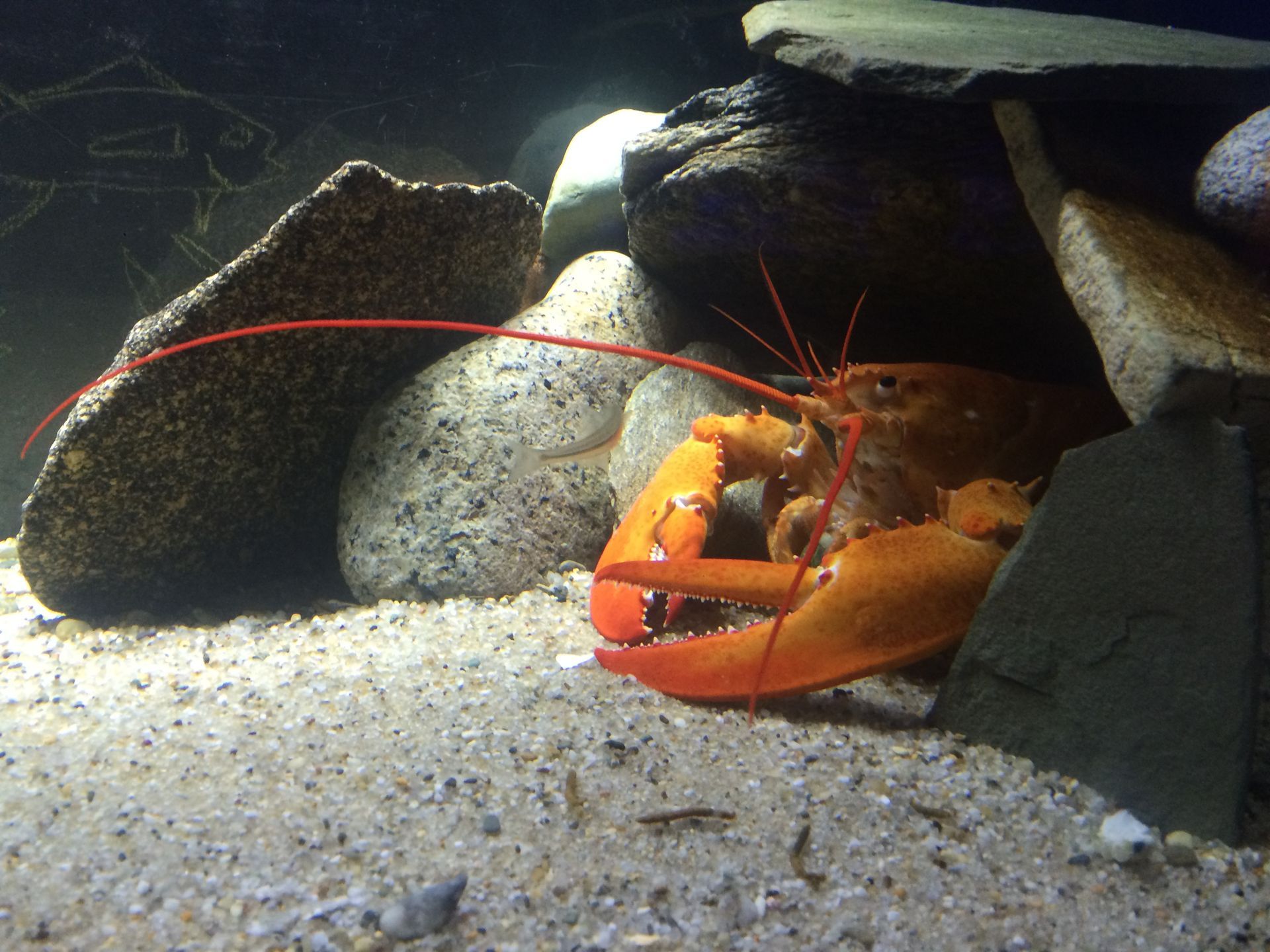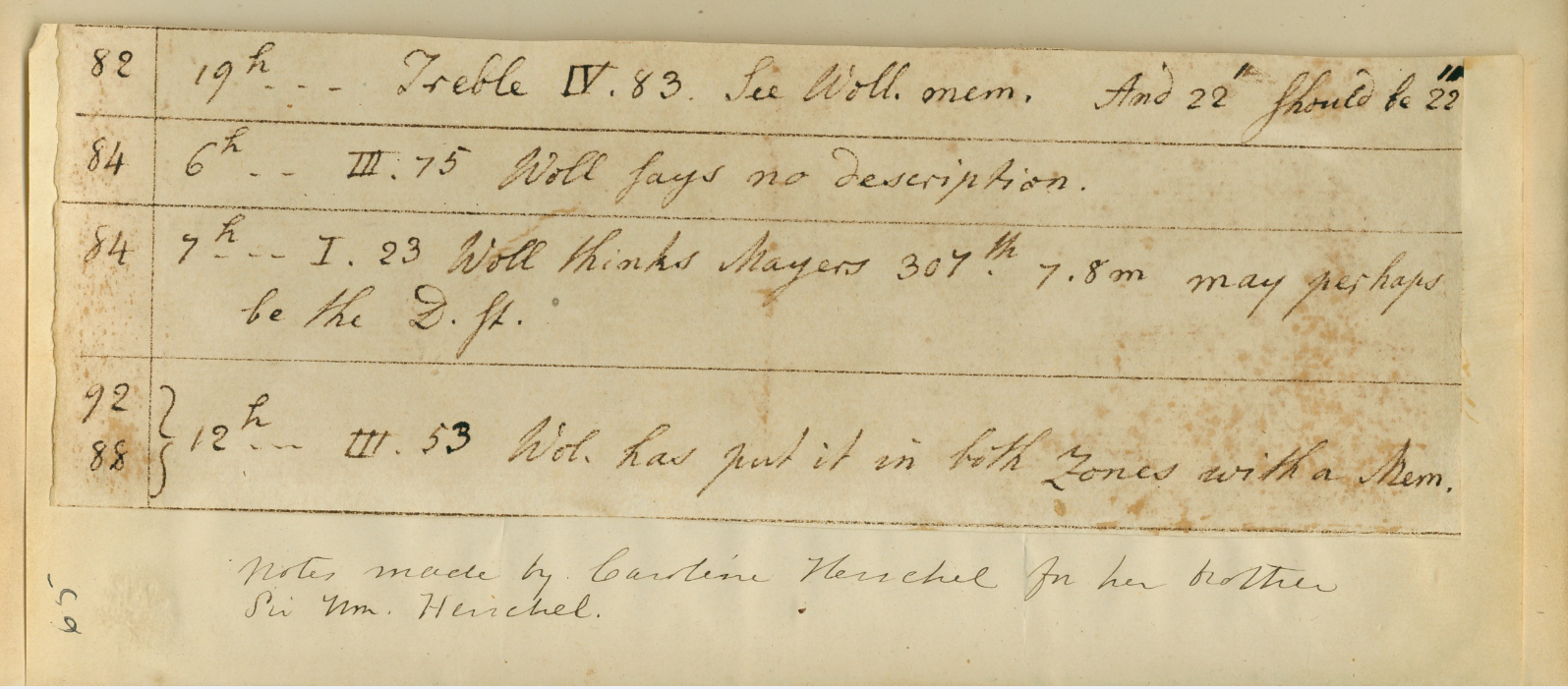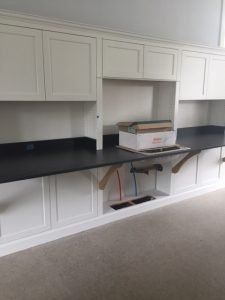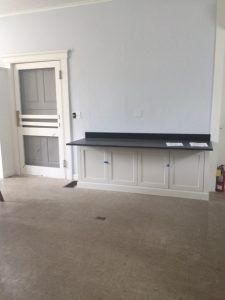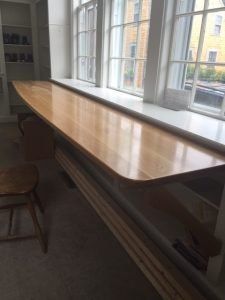By Jascin N. Leonardo Finger
•
November 17, 2025
Clementine has finally molted! We at the MMA have been awaiting this for quite some time so I decided to re-post an old blog about Clementine. Well, not quite. But, part of my job is to also take care of all of the MMA properties. So, I headed over to check on one and what cleaning supplies are needed for the summer and for our staff spring clean-up of the site. In one room, some of the animals from the Aquarium over-winter. One of those is “our” lobster, Clementine, so-called because she is orange in color. (Orange lobsters are five times rarer than blue lobsters and only one in ten million lobsters are orange.) She is fairly active and though the hope is that she “sleeps” a bit for the winter, she doesn’t seem to. So, enter curator into room who glances over and hopes the lobster does not “run” to the side of the tank asking to be fed. Yes, she really does that – she has gotten used to people. I always hate it because I feel guilty – I do not feed her because that falls to the Natural Science Department and I do not want to hurt her or her schedule in any way. In any case, “Whew!” She actually seemed quiet at the back of the tank. Maybe she was “sleeping.” I kept moving to the next room and glanced back. Low and behold, she was at the front of the tank waving her claws! Seriously? So I kept moving on – after telling her, “I can’t feed you,” – and she went to the back of the tank again! Another, “Whew!” I decided to text Emily, our Director of Natural Science (at that time), and relay what happened. I get a text back. “You can feed her if you want.” “Really?” I texted back. “What do I give her?” So, Clementine then ran back to the front of the tank when she saw me opening the freezer and taking out the mussels and a shrimp. I got another text from Emily: “Use the forceps to hand them to her.” Well, I wasn’t about to put my hand in there! So, I get the shrimp, put it in the forceps, open the top of the tank and start to put my hand down, and INSTANTLY two HUGE lobster claws come out of the tank and grab not the shrimp but the forceps! I wish I had a picture. I was afraid she was going to take the forceps. And then, I was afraid my hand was going to be her lunch. I could not get her to release the forceps – it was a battle royale though the battle was more on her part because I was afraid I would break her claw! After some twisting of the forceps and tugging, she finally relented, took the shrimp, and began her lunch. Another, “Whew!” I was afraid I was either going to hurt her or I was going to be explaining to my three-year old what happened to Mommy’s hand at work. Veuve Clicquot with that, Clementine? Apparently, someone else knew what transpired with the lobster. As I left the building, a male mallard duck was paddling around in the rather large puddle – if you can call it that – located on the property. We have recently had a large amount of rain. He was laughing (I mean quacking) at me. In all seriousness, I have never met a lobster with so much personality. Yes, personality. Clementine may just have changed my tune on lobster rolls. JNLF

